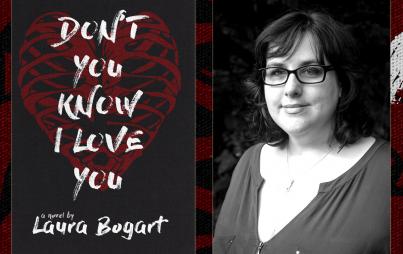
The media is all a-buzz with coverage of a just-released book from HarperCollins, written by a man who claims to be the son of the infamous Zodiac killer. The publisher kept the book—appropriately named The Most Dangerous Animal Of All—under wraps until its publication, allowing for a massive dose of publicity just as the book is available for sale (savvy).
The book’s author, Gary L. Stewart, makes all kinds of provocative claims based on his 12-year search for his biological father. But no feel-good ending of parental discovery was in store for Stewart. Coming to the conclusion that half your DNA comes from a heinous serial killer is surely one of the worst possible paternity scenarios. (Granted he’s making a buck or two off it.)
In case you’re a little rusty on your mid-century serial killer trivia, here’s a refresher. A still (officially) unidentified man shot or stabbed least four young men and three young women in Northern California between December 1968 and October 1969. There are five other suspected victims, ranging from 1963 to 1970, and the killer claimed to have more than 30 victims in all.
The killer dubbed himself “Zodiac” in a series of letters he sent to Bay Area newspapers, taunting them and the police about his murders. And as if that wasn’t sensationalistic enough, the letters also included cryptograms that the killer claimed contained his identity and rationale for the crimes. Threatening to murder more people if the newspapers failed to publish his codes, editors obliged. The public poured over the cryptograms trying to solve the puzzle. Only one of the cryptograms was ever decoded, and it involved rantings about murdering people to collect slaves for the afterlife. Airtight logic.
Of course this prompted massive country-wide fascination and horror. A number of films have been loosely or directly based on the Zodiac killer, including the classic Dirty Harry and 2007's Zodiac.
So back to the book at hand. Stewart says he performed hundreds of interviews to glean information on his father, who he started looking into after his birth mother, Jude Gilford, contacted him in 2002. Here’s the rundown of Stewart’s claims:
*At age 13, Gilford married 27-year-old Earl Van Best Jr. (the claimed killer). The two fled San Francisco after their less-than-legal union, to Baton Rouge, Louisiana, where Gilford gave birth to Stewart in 1963.
*As you might imagine, Best was something of a cad even in these early days. Supposedly against Gilford’s protests, Best abandoned the four-week-old baby in an apartment building, and was shortly thereafter jailed for rape of a minor and fraud charges. Gilford never spoke to him again.
*Best spent several years in a maximum-security facility for the criminally insane (ding ding ding). He was paroled in 1965, and the first known Zodiac murder occurred in 1968. Best died in 1984.
*Stewart’s rationale for his father’s guilt is based on similarity between his father’s fingerprints and ones left at crime scenes, and between his father’s handwriting and that of the killer. Further, Stewart claims the Zodiac killer’s female victims resembled Gilford, and Stewart conjectures that Best murdered partially out of a desire to enact proxy revenge on his former child-bride.
It seems we could take this whole Zodiac allegation out of the realm of speculation, and into the realm of certainty with a simple DNA test comparing Best’s chemical makeup with that left behind by the killer at crime scenes. And Stewart claims he’s been lobbying the San Francisco Police Department to do just that for a decade, to no avail. Moreover, Stewart claims in the book that the SFPD “knew more than they’re willing to admit” about the killer.
Is there yet another layer of intrigue to this salacious saga? For their part, northern California police claimed to have no prior knowledge about the book, but said it’s “certainly something our homicide investigators will take a look at.”
It’s worth noting that there have been throngs of accusations about the identity of the Zodiac killer over the years, and there appears to be nothing definite in Stewart’s claims. Still, it’s an interesting turn in a decades-old cold case.
Image: ThinkStock






